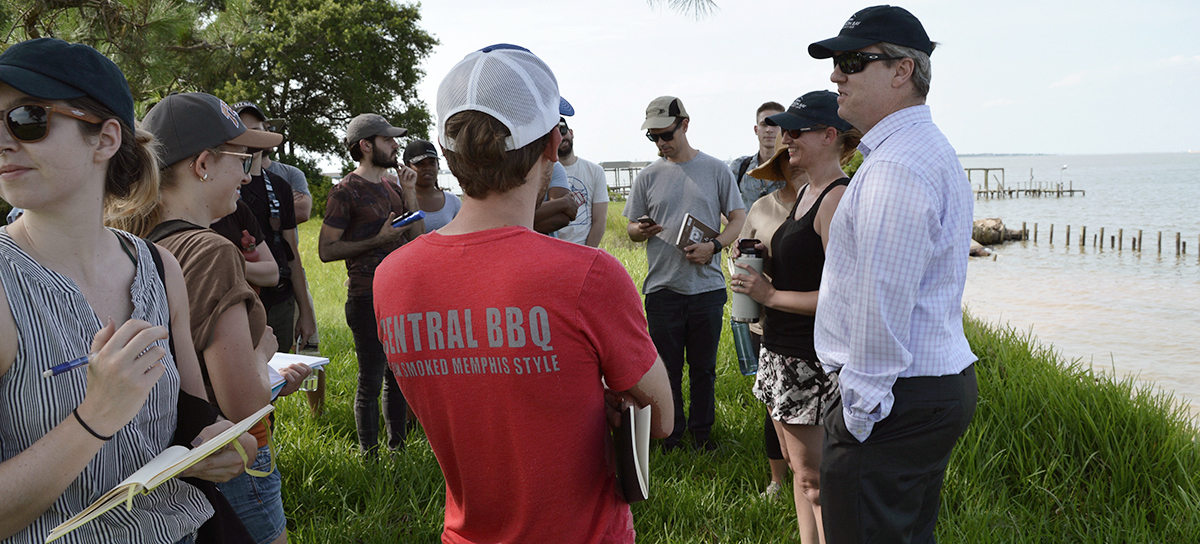
SHIFT
SUMMER 2019 | Galveston Bay Foundation | Kemah TX on Galveston Bay
Project Team: Stephanie Almendares, Daniel Aronson, Nai’lah Bell-Eden, David Burns, Arlene Ellwood, Catherine Kanter, Brandon Lawry, Amaya Lucas, Harrison Marek, Lena Page, Tyler Schuertz, Shelby Taubenkimel, Inci Uckok, Alex Uhlmann, Ariella Yendler
Teaching Assistant: Andy Garden
Each summer the Gulf Coast DesignLab hosts the summer Public Interest Design studio at the University of Texas at Austin School of Architecture. This advanced design studio is a concentrated, ten-week, interdisciplinary summer studio resulting in a built project designed by the students. This summer the students worked the Galveston Bay Foundation of Houston. https://galvbay.org/ Their mission is threefold. First, they promote science-based environmental education for the public, ranging from school children to public officials; so they recognize the positive quality-of-life benefits healthy ecological systems provide. Second, they expand conservation and restoration efforts by working closely with other interested partners around the Bay. And third, they foster research and monitoring of Galveston Bay by training citizen scientists to augment professional efforts while aiding in watershed planning the Gulf Coast.
Galveston Bay Foundation recently purchased property overlooking the bay in Kemah, a bedroom community of Houston, on which to build their new headquarters. The students were asked to build the first structure on the site, sitting on the edge of the bay. The foundation needed an outdoor environmental education pavilion which would accommodate up to seventy-five guests (mostly middle and high school students), participating in the stakeholder’s environmental education programs. There they take water samples of the bay, study its flora and fauna, planting sea grasses and install oyster bay reefs around the bays edge. The GCDL students participated in some of the same activities middle and high school students experience—spending time planting cord grasses along an eroded section of the west bay and placing bagged oyster shells to help stabilize edge erosion in a part of the bay undergoing steady land loss bay.
The stakeholder asked that the design be architecturally inspiring and reflect their aspirations of making the bay a better place for the seven million people in the Houston metro area. The students selected the name SHIFT because each plane of the project shifts from its accustomed location. Screens slip away from the deck and don’t engage its edges. Portions of the structural frame slide past the deck and into the lawn. The roof shifts out over the lawn and covers both raised deck and the grass. And finally, as one moves throughout the project, views through the screens shift, framing different views opening and closing onto the landscape and bay.